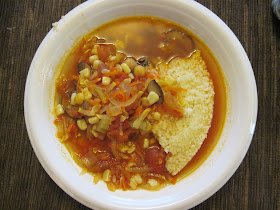"Weeds" among my weeds!
Book Review (and the essay it inspired): Mabey, R. (2010). "Weeds: In Defense of Nature's Most Unloved Plants" NY: ECCO Paperback (Harper-Collins)
I think about weeds altogether too much, and I have nightmares about them too. As an avid gardener, whose desires are greater than the time and energy I have to give to them (like everyone else), I feel that a weedy bed is an eyesore, a slur and a commentary on my lazy immorality. But Richard Mabey, author of the book that is the object of this review and essay, just might have me thinking differently about weeds...at least a little.
Reading this book, and countless other garden books, I have settled on a central thesis: that weeds share many of the qualities that we judge admirable in our fellow human beings. And a few that we find....shall we say, less than desirable?
Weeds are consummate survivors and we all love a survival story, right? They arise from the school of hard knocks, often developing their toughness in difficult and demanding environments: rocky, acid, alkaline, poor soil or scree; overly cold or hot temperatures; climate extremes; overly wet or arid conditions; and subject to repeated grazing, predation, fires or trampling. These conditions make for a strong species.
Weed are vigorous. They are strong, vibrant, and can grow with abandon. They out-compete other plants. Turn your back and, boom, the hill is covered in kudzu, your fence with bindweed. They win. Everyone loves a winner?
Weeds are survivors in other ways. Some have seeds with incredibly long viability (the current record is about 2,000 years). They can often still sprout after long decades of dormancy. Others germinate incredibly fast: the record is the tumbleweed, which can germinate in 36 minutes. Weed seeds outrace and outlast the competition.
Weed seeds are inventive: they have many strategies for dispersal. They can be sticky or gummy, thus adhering to you, me and other creatures, only to fall off later in a new spot. They may have burrs or spikes to do the same trick (Velcro was inspired by a cockle burr). Some actually shoot their seeds a distance, or have fluffy seed that floats far away. Some seeds, encased in a tempting morsel, like a poison ivy berry, are impervious to digestive juices, and are pooped out, unharmed, with a little packet of...er...fertilizer.
Weed roots are similarly inventive. Some are incredibly vigorous, running under- or above-ground to greener pastures. Others have deep tap roots, anchored roots, or stolons, that snap off when pulled, only to form a hydra-headed plant when it re-sprouts: think poke weed or the common dandelion.
Some weeds are just plumb attractive. We like them, we ignore them... the they rub their fornds together and take over. Think of violets and purple loosestrife.
And then there are the traits that would not do well in humans. Some weeds (and other, more culturally valued plants) are allelopathic, that is, they are the poisoners of the plant world, pumping chemicals into the soil, subsances that kill or stunt other plants, but to which the host plant is immune. Some smother other plants and kill by blocking light and water. To the vigorous victor go the spoils.
Next time? What is a weed anyway? More than just "the wrong plant in the wrong place?" We'll see!
Happy gardening! Happy New Year!
Next time? What is a weed anyway? More than just "the wrong plant in the wrong place?" We'll see!
Happy gardening! Happy New Year!




.JPG)
.JPG)

.JPG)

.JPG)
.JPG)





































